
Case Report
Austin J Clin Case Rep. 2014;1(12): 1061.
Ocular Prosthesis- A Simplified Technique
Mallikarjuna Ragher1*, Aishwarya Chatterjee2, Sanketsopanpatil1, Debopriya Chatterjee3, Mallikarjuna DM1, Swetha V1, Savita Dandekeri1, Pradeep MR4 and Ashwinishetty5
1Department of Prosthodontics, Yenepoya Dental College, India
2SMS Medical College & Hospital, India
3Department of Periodontics, Government Dental College, India
4Department of Prosthodontics, A J Institute of Dental Sciences, India
5College of Dental Sciences, India
*Corresponding author: Mallikarjuna Ragher, Department of prosthodontics, Yenepoya Dental College, Yenepoya University, Mangalore, 515018, Karnataka, India
Received: November 11, 2014; Accepted: December 03, 2014; Published: December 04, 2014
Abstract
An eye for an eye is what the old saying goes. The eye plays a vital role as one of the six senses. From vision to expression it has its varied functions. Loss of this organ severely damages not only the function of vision but also self-confidence. A case report is presented where in a simple technique is used to provide the subject with an eye prosthesis as rapidly as possible. Also digital reproduction of the iris is made, instead of painting the iris using acrylic or oil painting.
Keywords: Ocular prosthesis; Addition silicone impression material; Conformer; Enucleation
Introduction
The loss or absence of an eye may be caused due to congenital defect, irreparable trauma, tumour, painful blind eye, sympathetic ophthalmia or the need for histological confirmation of a suspected diagnosis [1]. Surgical procedures in the removal of an eye can be broadly classified as: evisceration (where the contents of the globe are removed leaving the sclera intact), enucleation (most common, where the entire eyeball is removed after severing the muscles and the optic nerve) and exenteration (where the entire contents of the orbit including the eyelids and the surrounding tissues are removed) [2]. In such cases artificial eye prosthesis replaces the natural eye. The art and techniques of artificial eye fabrication date back to remote times. Artificial eye have been in presence since the times of the Egyptians before 3000 BC. It was only after 16th century that artificial eye was made to fit the socket. Ambroise Parre made use of both glass and porcelain eye. Glass was eventually replaced by acrylic during and after the two world wars [3-6].
An ocular prosthesis is a maxillofacial prosthesis that artificially replaces an eye missing as a result of trauma, surgery, or congenital absence. The prosthesis does not replace missing eye lidsor adjacent skin, mucosa or muscle [5]. In this case report an ocular prosthesis was fabricated with digital duplication of iris of the patient.
Clinical Report
A 60 year old male subject reported to the department of Prosthodontics, College of Dental Sciences, Davangere, Karnataka, with chief complaint of misplaced ocular prosthesis. Past history revealed loss of eye due to trauma and subsequent evisceration. Examination of the tissue bed revealed intact muscle bed with residual movements presents (Figure 1).

Figure 1: Preoperative photo of ocular defect.
Since subject stated an urgency to get rehabilitated, a discourse from the usual procedure of fabrication of customised ocular prosthesis was chosen. Here impression of the tissue bed was made diimcarectly with the syringe tip of additional silicone elastomer impression material (Aquasil, Dentsply) (Figure 2). The tip was disengaged from the loading gun and invested in irreversible hydrocolloid and dental plaster to support the impression (Figure 3). TypeIII dental stone was poured in the impression and 3 part cast obtained. Modelling Wax was poured in the obtained mould to obtain the scleral wax pattern (Figure 4).This wax pattern was placed in the defect and evaluated for fit, contour, esthetics and comfort of the subject (Figure 5). The iris plane and pupil point were evaluated by drawing guide lines on the patient’s face. This was confirmed with the contralateral normal eye. The pattern was processed in heat cure tooth colored acrylic (DPI tooth moulding powder, C shade). The scleral blank was finished polished and tried in the subject’s ocular defect (Figure 6). At try in of the scleral blank, eye contour and lid configurations were evaluated and approximated to that of the contralateral normal eye. Care was taken to see that the eye lid closed over the scleral blank normally like the contralateral normal eye.
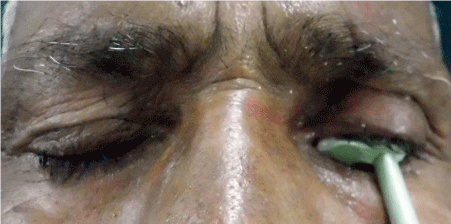
Figure 2: Impression making with syringe tip.
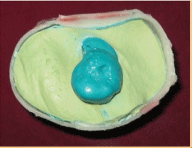
Figure 3: Impression of the ocular defect.

Figure 4: Wax patterns.

Figure 5: Wax pattern try in.
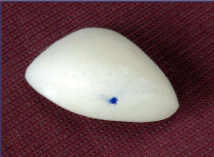
Figure 6: Finished scleral blank.
The patient was asked to look straight at a distance, and a digital photo was made of the normal eye. The image was edited using Adobe Photoshop and a color print was obtained on photo paper. The iris portion of the photo was cut out and a layer of cyanoacrylate was applied to make it water resistant.
To obtain the convex shape of the cornea, self cure clear acrylic was molded over the iris paper, finished polished and attached to the scleral blank at a predetermined position. The scleral blank was trimmed for 1mm along the outer surface. Characterisation of scleral portion was done with red color rayon thread attached by means of monomer polymer syrup. Yellow staining was also done along the scleral region. Final coat of heat cure clear acrylic resin was packed on the surface of the characterised scleral blankand processed. Finishing and polishing of the prosthesis was done and any residual sharp areas were avoided and trimmed (Figure 7). The finished and polished eye prosthesis was inserted (Figure 8).
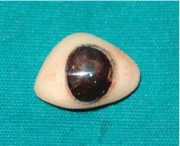
Figure 7: Finished scleral blank.
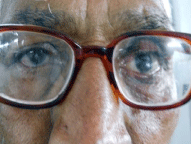
Figure 8: Final prosthesis placed in ocular defect.
Post insertion instruction involved regular removal and cleaning of the prosthesis with an ophthalmic irrigation solution.
Discussion
Several techniques have been used in fabricating and fitting artificial eyes. Empirically fitting a stock eye, modifying a stock eye by making an impression of theocular defect, and the custom eye technique are the most commonly used techniques [6]. Disadvantages of stock eye prosthesis are numerous starting from poor fit to infection of the tissue bed. In comparison the custom fabricated acrylic prosthesis is precise, has good fit and aesthetically superior. This is so as an impression of the tissue bed of the patient is obtained prior to fabrication [6-9]. Direct impression was made of the tissue bed with addition silicone elastomeric impression material (Aquasil, Dentsply). This was a discourse from ususal procedures of fabrication of custom tray to obtain the impression [1,2,4,6-9]. Traditionally ocular prosthesis has incorporated the hand painted iris into the prosthesis. Aline Úrsula Rocha Fernandes had concluded in her study of 40 paint samples, that all paints underwent alteration overtime, with oil paint presenting the highest resistance to accelerated aging [3]. However digital reproduction of the iris is possible now with advanced photographic methods. Artopoulou in his case report has discussed at length about the procedure for reproducing the patient’s iris by digital photography [6]. This procedure was adapted for the current case. Ocular button was not used to place the iris; instead it was positioned directly on the scleral blank and secured with cyanoacrylate. This procedure conserves time making the fabrication of the ocular prosthesis a day procedure.
Conclusion
An alternative approach to fabrication of ocular prosthesis is presented in this case report. Direct impression with an elastomeric impression material (Aquasil, Dentsply) has been tried here with satisfactory results. Digital iris has been incorporated in the ocular prosthesis instead of the hand painted method. Both the techniques require further study to assess their efficacy and stability.
References
- Nafij BJ, Theerathavaj S, Mohammad KA. A Complete Procedure of Ocular Prosthesis: A Case Report. International Medical Journal. 2013; 20:729 -730.
- Kaur A, Pavaiya A, Singh SV, Singh RD, Chand P. A simplified approach to fabrication of an ocular prosthesis: a case series. Indian J Dent Res. 2010; 21: 615-617.
- Fernandes AU, Goiato MC, Batista MA, Santos DM. Color alteration of the paint used for iris painting in ocular prostheses. Braz Oral Res. 2009; 23: 386-392.
- Sandeep C, Gopinadh A, Kavya R, Phani PB, Sampath K, Krishna CA. A time saving method to fabricate a custom ocular prosthesis. Journal of orofacial research. 2013; 3: 42-45.
- The glossary of prosthodontic terms. J Prosthet Dent. 2005; 48-49.
- Artopoulou II, Montgomery PC, Wesley PJ, Lemon JC. Digital imaging in the fabrication of ocular prostheses. J Prosthet Dent. 2006; 95: 327-330.
- Kohli D, Mehta S, Makawana P, Choudhary S. An Ocular Prosthesis: A Case Report. Pravara Med Rev. 2011; 3.
- Nidhi DS, Aruna JB, Gangadhar SA. Fabrication of custom ocular prosthesis using a graph grid. Pravara Med Rev. 2009; 4.
- Nitai D, Renu Gupta, Meenakshi A, Ramkumar K, Jiji John. A simplified approach to fabricate a custom made ocular prosthesis. Int J Prosthodont Restor Dent. 2013; 3: 25-29.